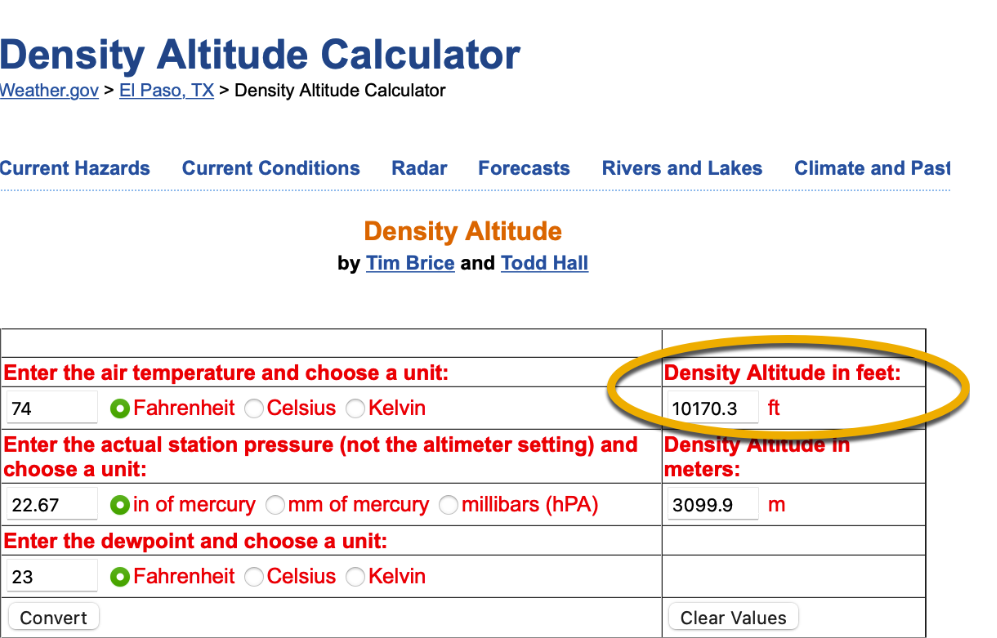Catching your breath
How density altitude affects your breathing…and your airline flight.

Many of us, in particular those of a certain age, may find difficulty breathing at high elevations during hotter, more humid, days. You’re encountering something very familiar to aviators…density altitude.
Density altitude is the density of the air at your location, taking into account barometric pressure (uncorrected to sea level), temperature, and dew point. For aviators, this directly affects aircraft performance. Frequent fliers departing Denver, for instance, have probably encountered weight-restricted flights during mid-day when the temperature is highest. For a fully booked flight, this may mean some passengers are bumped or cargo or luggage may be left behind. So what’s going on here?
Warm, humid air is less dense than cold, dry air. When takeoff performance for an airliner is calculated before departure, the FAA requires the planners to assume the aircraft loses an engine at the go/no-go speed for the runway in use, continues the takeoff, and clears the end of the runway at a height of 35 feet. If the performance planners determine the aircraft cannot meet this requirement at its current weight the load must be reduced until it can. This can be particularly acute for high, hot, and short runway conditions.
Let’s take a hot-day departure from Colorado Springs airport, elevation 6,186 feet. The National Weather Service has a density altitude calculator that will ask for station pressure (uncorrected), temperature, and dew point. If we assume the air temperature is 90° Fahrenheit, the dew point is 48° F, and the station pressure is 23.92 inches, the density altitude will be 9,505 feet. So even though the airport is at 6,186 feet, the aircraft will perform, and you’ll breathe, as though the airport were at 9,505 feet. Due to the less dense air, the aircraft will have to roll longer to achieve takeoff speed, which will take more runway, and it will perform more poorly in the event of an engine failure.
One more example (below) is the Aspen-Pitkin County Airport, elevation 7,673 feet. Currently, the temperature is 74°F, the dew point is 23°F, and the station pressure is 22.67 inches. Plugging these numbers into the calculator yields a density altitude of 10,170 feet. Even these cooler conditions give us a difference of almost 3,000 feet. No wonder it’s hard to breathe!

Getting back to our original point, density altitude may exacerbate breathing problems, fatigue, and other symptoms associated with higher elevations. You can use the NWS calculator to enter numbers for your location. If you have a weather station that gives an uncorrected value for station pressure, you can use that with your temperature and dew point to calculate density altitude. The NWS website is also a source for this data. The link to the Colorado Springs Airport (KCOS) page is here if you want to plug in a few actual numbers for yourself. Just remember to use actual station pressure and not the altimeter setting, which has been corrected to sea level.
